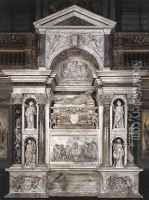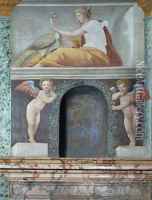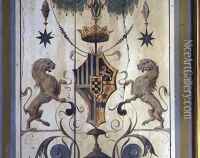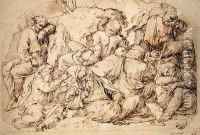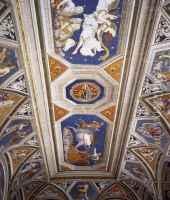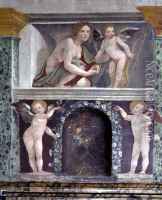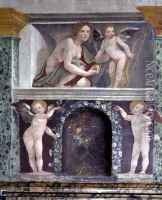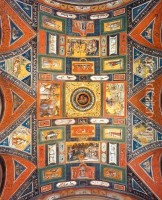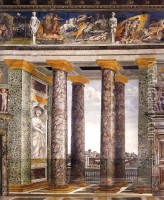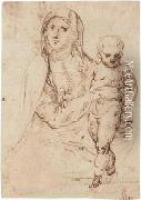Baldassare Peruzzi Paintings
Baldassare Peruzzi was an Italian architect and painter of the Renaissance period, born in a small town near Siena called Ancaiano, in 1481. He was active in Rome and in Siena and is known for his architectural designs, frescoes, and drawings that reflected the transition from High Renaissance to Mannerism.
Peruzzi moved to Rome in 1503, where he became involved in the city's vibrant artistic scene. His talents were recognized by major patrons, including the banker Agostino Chigi, for whom he designed the Villa Farnesina, a masterpiece of Renaissance architecture. The villa's frescoes, some of which are attributed to Peruzzi, display a combination of architectural perspective and mythological themes, showcasing his innovative approach to integrating painting and architecture.
During the sack of Rome in 1527, Peruzzi suffered a great loss of property and temporarily returned to Siena. There, he continued his work as an architect and was involved in the redesign of the city's cathedral and the Palazzo Pubblico. His architectural style is noted for its classical harmony and clarity, often employing geometrical forms and rational space divisions that would influence later architects.
Peruzzi's paintings are characterized by their use of perspective and clear, clean lines that anticipate Mannerist aesthetics. His frescoes and drawings exhibit a deep understanding of light and shadow, contributing to the dramatic effect of his compositions. He was also a set designer, creating innovative stage designs for theatrical performances, which further demonstrated his versatility and creativity.
After a few years in Siena, Peruzzi returned to Rome, where he was appointed architect to St. Peter's Basilica after the death of Raphael in 1520. Although many of his plans for St. Peter's were later altered or discarded, his contribution to the basilica's design was significant.
Baldassare Peruzzi's career spanned some of the most tumultuous and transformative years of the Italian Renaissance. He died in Rome on January 6, 1536. His legacy lies in his ability to blend the principles of Renaissance art with the emerging Mannerist style, creating works that were both innovative for his time and influential for future generations of artists and architects.
